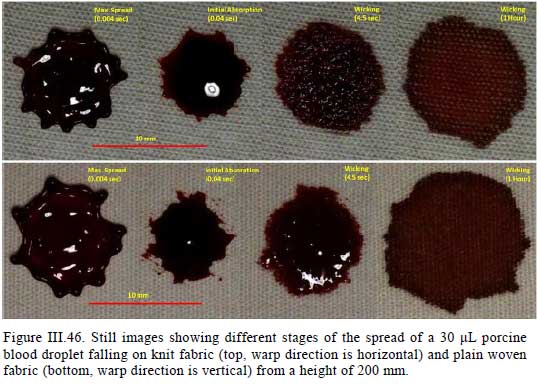Bloodstain Patterns on Textile Surfaces: A Fundamental Analysis
Stephen Michielsen
Michael Taylor
Namrata Parekh
Feng Ji
Bloodstain pattern analysis, BPA, on hard surfaces (such as walls, tables, appliances, hardwood floors, etc.) has grown into a science-based investigative tool that can help determine scenarios that are consistent with or counter to the events described by witnesses or suspects. At the vast majority of crime scenes involving a bloodletting event, textiles are present, either as apparel, household textiles (sheets, towels), upholstery, carpets, and so forth. Yet, the science of BPA on textiles is not able to render the same level of confidence in the analysis as on hard surfaces due to the complex structure of textiles and their ability to absorb some of the energy of an impact and to wick liquids. In the work described herein, a detailed examination of factors that affect BPA on two textile fabrics, an unbalanced 130 x 70 plain woven 100% cotton bed sheeting fabric (often referred to as a 200 thread count bed sheet) and a 100% cotton jersey knit T-shirt fabric. Due to the large number of samples tested, we began by searching for a suitable synthetic blood.


